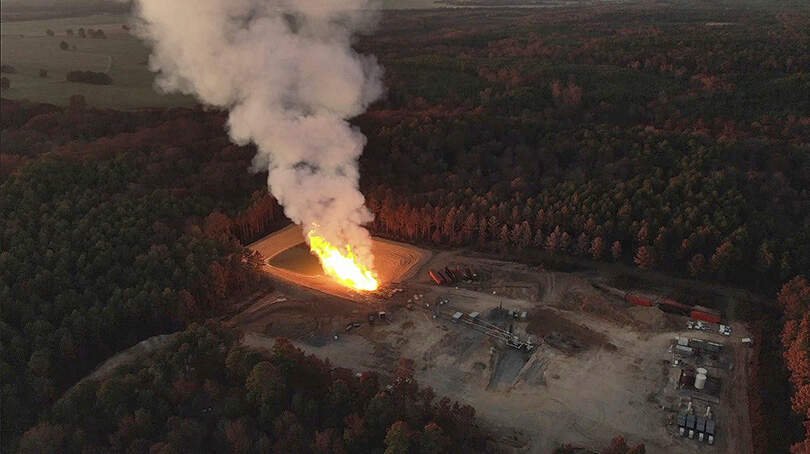The Mississippi River is losing its fight with the ocean – “This is not a one-off or once-in-100-years thing”

By Nancy Walecki
11 October 2023
(The Atlantic) – The mouth of the Mississippi River is the arena for a kind of wrestling match. In one corner of the ring is the salt water of the Gulf of Mexico, and in the other, the river’s fresh water. The two shove against each other, and usually, the Mississippi flows with enough force to keep the salt water out. But this year’s drought, currently affecting 40 percent of the continental United States, sapped the Mississippi of water pressure, and a wedge of salt water began muscling its way upstream along the riverbed this summer. It’s already corrupted the drinking water in several towns in southeast Louisiana and could reach New Orleans around late November 2023. The ocean is winning.
Whatever the climate brings in a year, the Mississippi River keeps the score. This year’s saltwater intrusion “is the integration of all these environmental events that have happened throughout the Great Plains, throughout the Ohio Valley, throughout parts of the Mountain West,” Matthew Hiatt, a hydrologist at Louisiana State University, told me. Landside drought lowers the river’s water levels, and rising sea levels on the ocean side pushes salt water in. Those who study the Mississippi agree that this year’s saltwater intrusion is a particularly dramatic example of what may become a more frequent feature of the dry season. “This is not a one-off or once-in-100-years thing,” William McAnally, hydraulic-engineering professor emeritus at Mississippi State University, told me. “It’s something we’re going to be seeing rather often.”
This isn’t the first time it’s happened. During the Dust Bowl, New Orleans’ drinking water had a salt concentration 55 percent above current federal guidelines. And in 1988—a year so hot and dry that about 30 percent of the nation’s corn crop failed and wildfires raged in Yellowstone for months—a wedge of seawater stopped just short of the water-intake plant for the eastern bank of Orleans Parish. In the past few decades, salt water has traveled far enough upriver that the United States Army Corps of Engineers built semi-temporary underwater earthen dams, or sills, four different times to stop it—in 1988, 1999, 2012, and last year. This year and 2022 mark the first consecutive times the Army has had to do so.
Human activity is also directly clearing the path for salt water. Throughout the Mississippi’s history, engineers have lowered its southernmost riverbed to accommodate the ships that fuel the region’s economy. The Army Corps of Engineers last lowered the channel in 1987, to 45 feet below the water line, and has begun deepening it to 50. Any drop “essentially provides more space for salt water to move in when the water levels are low,” Hiatt told me.
These compounding factors—lowering the river’s navigational depth, sea-level rise, and changing rainfall patterns—are a formula for more frequent saltwater intrusion, he said. In general, you can think of the Mississippi “like a stock portfolio,” John Sabo, the director of Tulane University’s ByWater research institute, told me. Rain in Ohio can cancel out drought in Minnesota, for instance, but when everywhere is withering, the river dips and peters. The Mississippi’s flow patterns are also becoming more volatile, McAnally, the MSU professor, told me. A statistically predictable pattern of rainfall runoff and river discharge, used to design infrastructure for 100-year floods, for instance, “has become a statistically unpredictable pattern of dry spells and wet spells,” he said.
This type of saltwater wedge is, in some sense, an affliction particular to the Mississippi River. Even Mobile Bay Estuary, 150 miles east, doesn’t experience this degree of intrusion, McAnally told me. Tides can make the difference. In many estuaries, tidal fluctuations churn salt water and fresh water like syrup and ice in a slushie machine, discouraging the separation that a wedge requires. The Mississippi estuary, comparatively, is calm enough that the denser salt water can settle and move upriver.
The underwater dams that the Army Corps builds work by halting the saltwater flow on the river bottom, said McAnally, who evaluated the efficacy of the 1988 sill as the chief of the Corps’ estuary division. The Corps also built a sill when the intrusion began this summer, but in late September, the seawater overtopped it. “At some point, the ocean gets high enough that sills don’t work anymore,” Sabo said. “And we might be there.”
As the salt moves up the river, communities who get their drinking water from the river have to drink bottled water, pipe fresh water in from elsewhere, or run desalination systems. Keith Hinkley, the president of Plaquemines Parish (where the salt water has been since June), told reporters he hopes to install permanent desalination systems in the region—an energy-intensive and expensive proposition, but a longer-lasting fix. Tyler Antrup, a visiting professor of urban planning at Tulane, says it might make sense to build a water-treatment plant further upriver, large enough to accommodate multiple towns. Over time, saltwater intrusion could affect communities outside the river’s immediate vicinity. If salt water flows into the Mississippi more regularly and stays for longer stretches, eventually it leaches into the groundwater. Right now this type of knock-on effect of sea-level rise is a greater worry in places such as Florida and Texas, but in Louisiana, too, “that could be something we deal with in the future,” Sabo told me. [more]

![Atmospheric and wildfire responses to soil moisture reduction in the idealized experiments using the CESM2. The values represent differences between the response of a 40% soil moisture reduction perturbation experiment in July 2045 and a control simulation: (a) soil moisture in 0–10 cm depth (units: kg/m2), (b) surface air temperature (units: °C), (c) relative humidity at 2 m (units: %), and (d) logarithm of burned area [log (burned area)] (units: km2). Time evolution over Western Siberia (65.5°N, 83.75°E): (e) soil moisture over 0–10 cm depth (units: kg/m2), (f) surface air temperature (units: °C), (g) relative humidity at 2 m (units: %), and (h) logarithm of the burned area [log (burned area)] (units: km2) (blue: control simulation, yellow: 20% soil moisture reduction perturbation experiment, and brown: 40% soil moisture reduction perturbation experiment). Graphic: Kim et al., 2024 / Nature Communications](https://desdemonadespair.net/wp-content/uploads/2024/10/image-18-1200x675.png)
